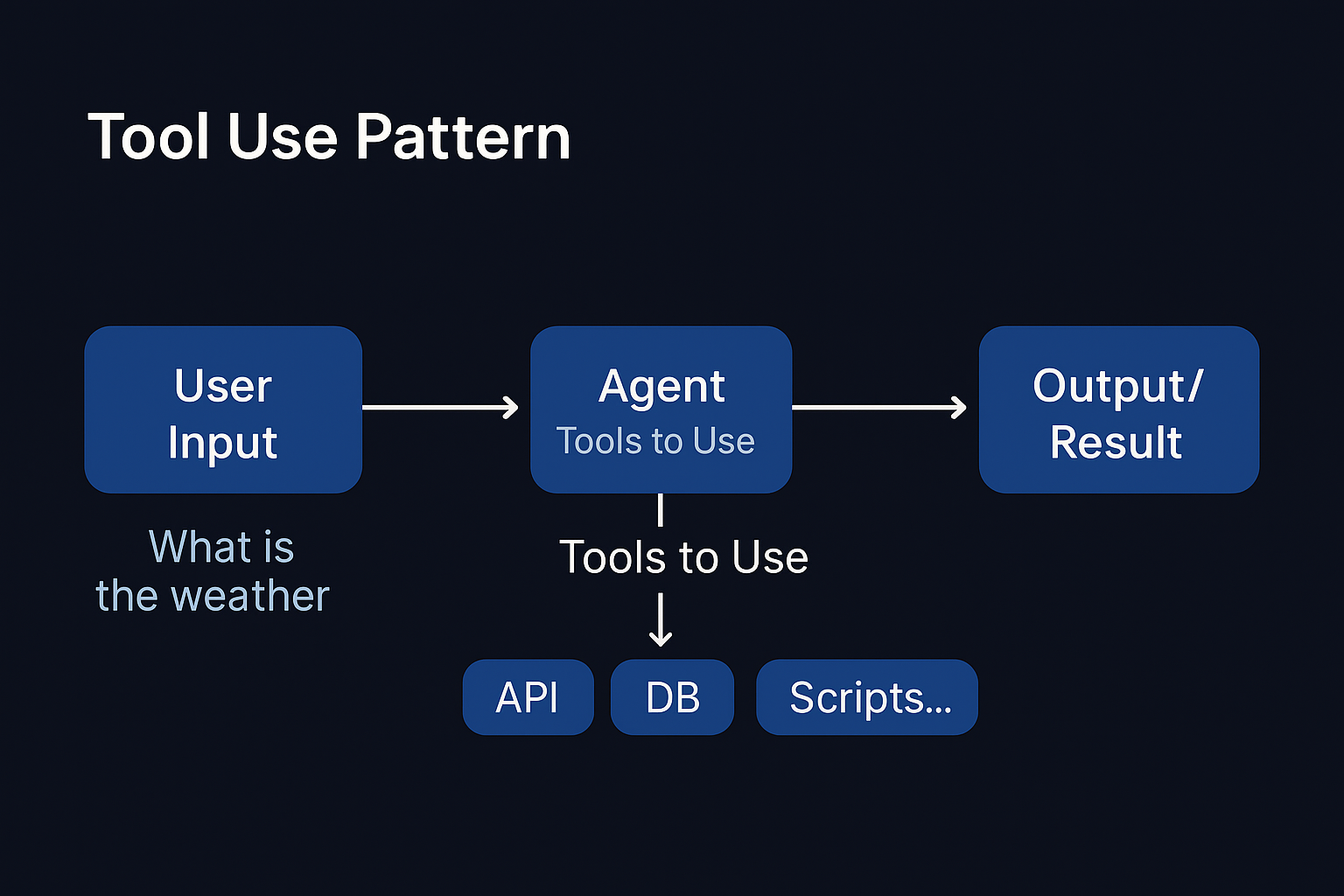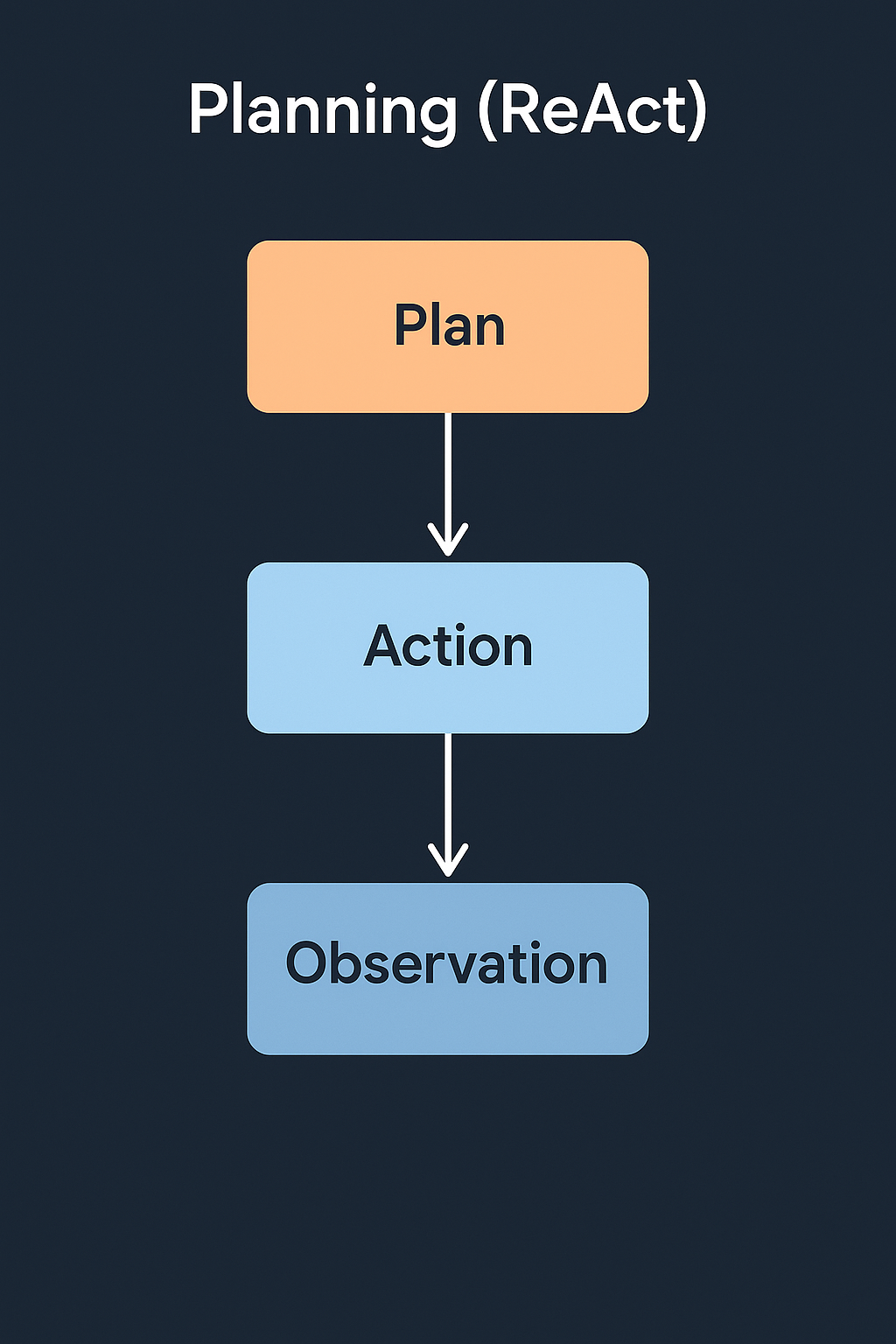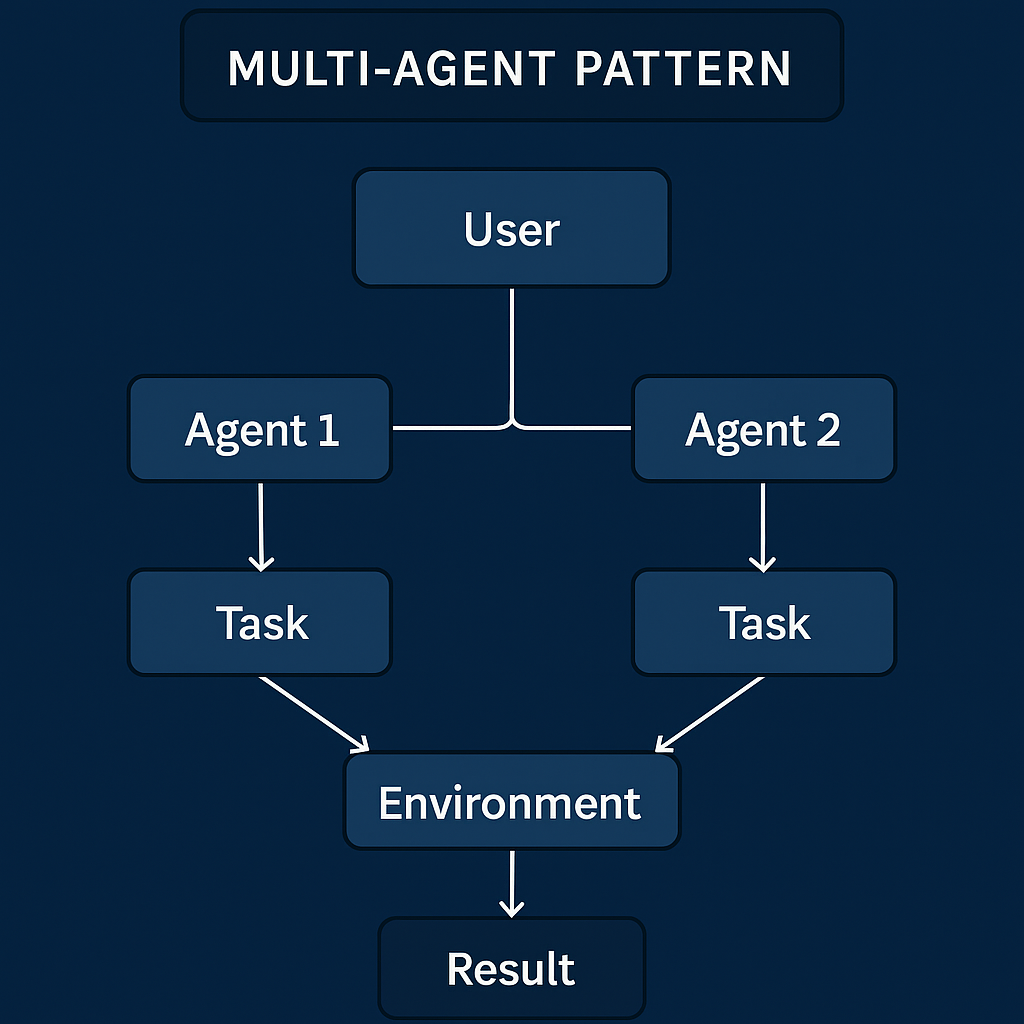AI Agentic Design Patterns: Building Smarter, Modular AI Systems
🧠 AI Agentic Design Patterns: Building Smarter, Modular AI Systems
Agentic AI involves designing systems around intelligent, task oriented agents not just static prompts. These agents interact with tools, reflect on their actions, plan tasks, and collaborate to solve complex problems.
This post explores core agentic design patterns that power advanced LLM systems like AutoGPT, LangChain Agents, and Microsoft AutoGen.
🔁 Overview: The Agentic Workflow
User Input
↓
LLM Agent
↓
Reflection → Tool Use → Planning → Multi-Agent Collaboration
↓
Final Output
Each stage contributes to a modular, iterative, and intelligent AI system.
🔍 1. Reflection Pattern
The agent evaluates its own outputs and improves them in an iterative loop.

🔹 Use Case:
- AI writing assistants
- Scientific explanation validation
- Code generation feedback
🛠 2. Tool Use Pattern
The agent can access external APIs, databases, scripts, or tools to enhance its capability beyond text reasoning.

🔹 Key Concepts:
- Augmentation – LLMs become tool-using agents
- Modularity – Tools are swappable and composable
- Dynamic Interaction – Real time API/data usage
🧠 3. Planning Pattern (ReAct)
The agent decomposes tasks using Thought → Action → Observation steps. This enables goal directed reasoning.

🔹 Example Steps:
Thought: I need the current weather.
Action: Call weather API.
Observation: 22°C and sunny.
Final Answer: It’s 22°C and sunny today.
🔹 ReAct = Reason + Act
Combines logic and tool use in sequence great for coding, retrieval, and task chains.
🤝 4. Multi Agent Pattern
Multiple agents with distinct roles collaborate to solve a shared task.

🔹 Core Features:
- Task Division – Split work across agents
- Role Assignment – Each agent is specialized (e.g., Researcher, Writer, Validator)
- Communication – Agents share insights
- Final Assembly – Results merged into a final output
🔹 Example:
In a research agent:
- Agent 1: Search expert
- Agent 2: Summarizer
- Agent 3: Fact-checker
📐 Agentic System Example: End to End
- User asks a complex question
- Planner agent decomposes the task
- Tool agent fetches data
- Reflection agent verifies logic
- All agents collaborate to generate a grounded, complete response
🔧 Popular Frameworks for Agentic Patterns
| Framework | Features |
|---|---|
| LangChain | Agent orchestration, tools, memory |
| AutoGen | Multi agent conversations (Microsoft) |
| CrewAI | Agent roles, communication, execution |
🧠 Why Agentic Patterns Matter
- Enable scalable task decomposition
- Bring modularity and composability to LLM apps
- Introduce reflection and verification loops
- Allow true autonomy via tool use + planning
Think of LLMs not just as talkers but as thinking, acting, collaborating systems.
📘 Summary
Agentic patterns transform large language models from static responders into intelligent systems that:
- Think and revise (Reflection)
- Act through tools (Tool Use)
- Plan steps (ReAct)
- Collaborate (Multi-Agent)